Samuel Beckett’s “Krapp’s Last Tape," now playing at NYU’s Skirball Theater, contains almost as much stage direction as dialogue—a fitting choice, since the dialogue itself is sparse, and half of it is pre-recorded. Beckett allows us to spend 60 minutes with an elderly man taking stock of his life. The story unfolds beautifully thanks to the production’s striking visuals and the superb direction of Vicky Featherstone.
The monochromatic design—with its sharp lines and subdued lighting—recalls Edward Hopper’s slanting sunlight and shadows or Giorgio de Chirico’s "Mystery and Melancholy of a Street." Both painters excel at evoking isolation, discontent, and foreboding. At times, the staging is so precise it could be mistaken for a photograph rather than a live performance. Yet when movement does occur, Irish actor Stephen Rea’s superb artistry pulls us fully into Beckett’s world of remembrance, humor, and regret. His performance, paired with the visual design, is stunning.
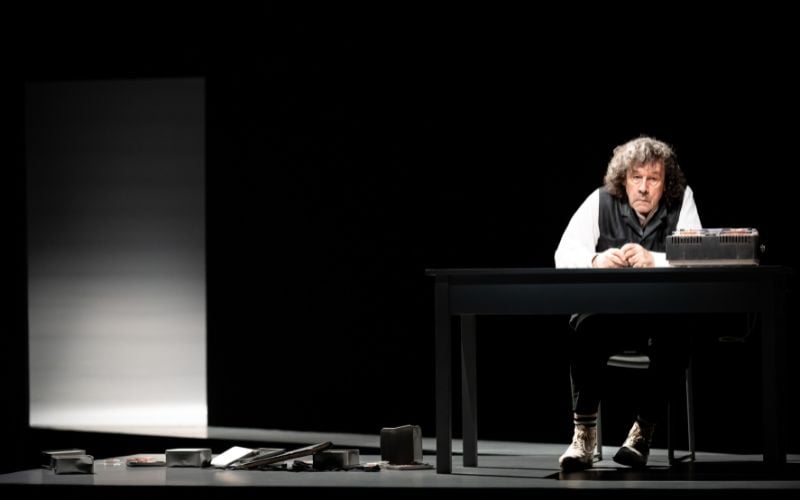
Stephen Rea in "Krapp's Last Tape." (Greg Kessler)
This one-act play centers on Krapp, a man who has recorded reflections on his life every birthday. Now 69, Krapp has accumulated nine boxes of spooled tapes but singles out one in particular: “Box three, spool five.” 12 years ago, Rea had the foresight—and luck—to record the younger Krapp’s dialogue.
As Krapp listens and occasionally comments on his past insights, his recorded voice sounds virile and vibrant—so unlike his present croak of old age: “Thirty-nine today, sound as a bell, apart from my old weakness, and intellectually I have now every reason to suspect at the... crest of the wave—or thereabouts.”
The recording recounts the key moments of Krapp’s life up to that point—his mother’s passing, his time in pubs, lost loves, discontent, and, finally, a revelation: “Spiritually a year of profound gloom and indigence until that memorable night in March, at the end of the jetty, in the howling wind, never to be forgotten, when suddenly I saw the whole thing.”
Krapp nods along as he recalls these moments, caught between memory and melancholy.
The older Krapp then loads a new tape, attempting to summarize his current existence before giving up in frustration: “Nothing to say, not a squeak. What's a year now? The sour cud and the iron stool.”
He quietly sings the hymn:
Now the day is over,
Night is drawing nigh,
Shadows of the evening
Steal across the sky.
Longing for his youth, Krapp replays the earlier recording, revisiting his past romantic encounters and the bittersweet conclusion of his younger self: “Perhaps my best years are gone. When there was a chance of happiness. But I wouldn't want them back. Not with the fire in me now. No, I wouldn't want them back.”
To soften the prevailing melancholy, Beckett sprinkles in moments of humor. Krapp devours bananas, sneaks offstage for a drink, toys with the word “spooooooling,” and mocks his own youthful arrogance: “Just been listening to that stupid bastard I took myself for thirty years ago—hard to believe I was ever as bad as that. Thank God that's all done with anyway.”
During these moments, Rea glances mischievously toward the audience. Life may not have gone Krapp’s way, but he still has a bit of craic left in him.
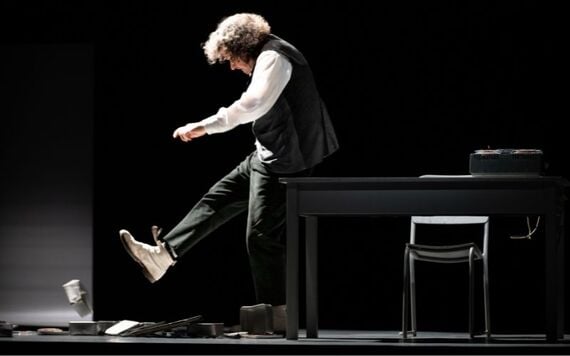
Stephen Rea in "Krapp's Last Tape." (Greg Kessler)
Again, the visual and auditory presentation of the play was stunning. Set design by Jamie Varten. Costume design by Katie Davenport. Lighting design - extraordinary - by Paul Keogan. Sound design by Kevin Gleeson. Audio Director by Stephen Wright. All contributed their skill and talent to make a very special theatrical experience.
Though “Krapp’s Last Tape” revolves around regret, it is so beautifully presented that it is a joy to experience.
"Krapp’s Last Tape" runs to October 19.
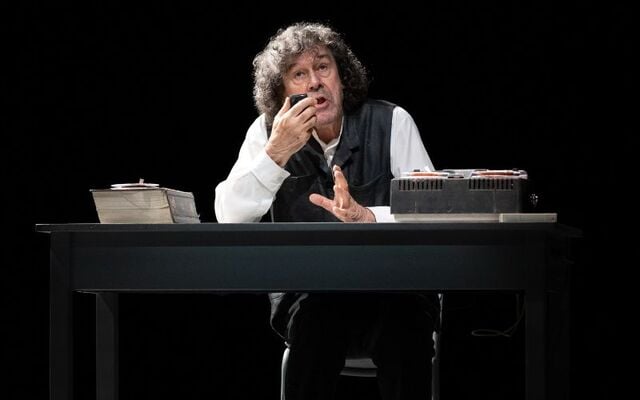
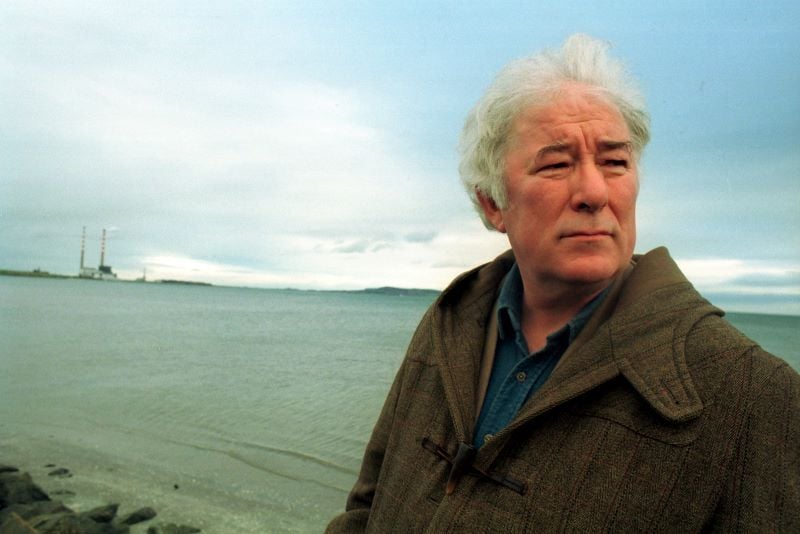
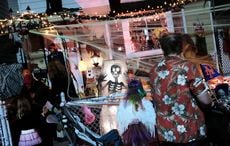
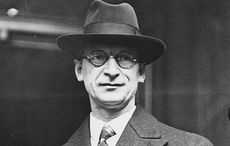
Comments